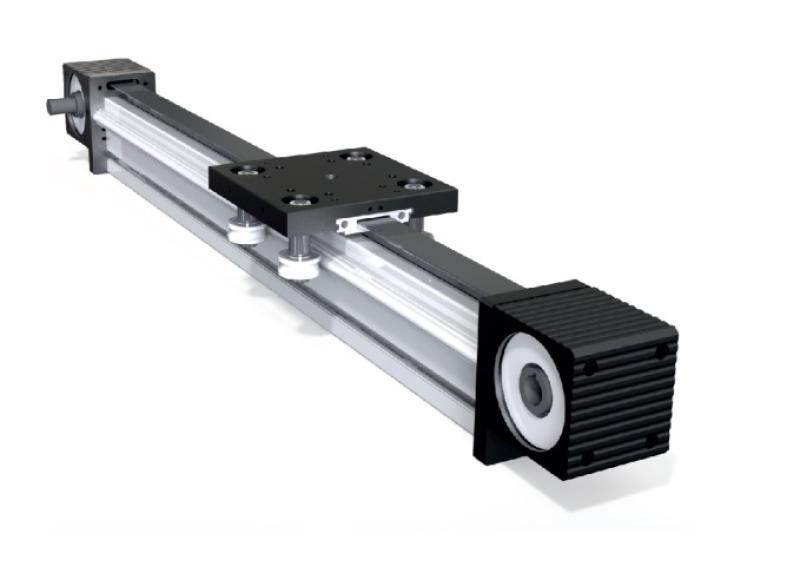Linear motion systems are mechanical systems used to enable linear (straight line) motion in industrial and mechanical applications. With the use of linear motion components like linear guides, bearings, actuators and various mechanical and electromechanical components, linear motion systems can transport materials, position machine tools and implements, scan objects and more. In this article, we will discuss the fundamental components, applications and advantages of linear motion systems.
Components of a Linear Motion System
A typical linear motion system consists of the following core components:
Linear Guideways
- Linear guideways provide the foundation for linear motion. Linear Motion Systems They constrain mechanical components to move in a straight line along the guideway. Common guideway designs include linear rails, recirculating ball bearing guides, flat linear guides andCrossed roller guides.
Linear Bearings
- Linear bearings interface with the guideways and enable low-friction sliding motion. Popular bearing designs are linear ball bearings, linear roller bearings.
Actuators
- Actuators provide the motive power for linear motion. Common actuator types used are linear motors, belt or chain drives connected to rotary motors, leadscrews with rotary nuts, pneumatic or hydraulic cylinders.
Position Sensors
- Linear position sensors like linear encoders, resolvers or linear potentiometers provide feedback on the position of moving components in the system.
Control Systems
- Microprocessor-based motion controllers along with drives are used to automate, synchronize and precisely control actuator motion profiles. Programmable logic controllers (PLCs) are commonly used.
Other Components
- Components like couplings, brackets, carriers joins all the core linear motion system elements together. Housing/frames provide structural support. Lubrication ensures smooth motion.
Applications of Linear Motion Systems
Given their capability to enable accurate, fast and repetitive linear movements, linear motion systems have applications across many industries:
Material Handling - Used for picking, placing, palletizing, sorting, conveying in automation lines, packaging machines.
Semiconductor Manufacturing - Wafer handling equipment, scanning electron microscopes require precision linear positioning.
Medical Devices - Used in imaging equipment like MRI, CT scanners. Also used in precise surgical tools.
Machine Tools - Linear motion drives spindles and carriages in CNC machines, metal cutting tools, wood/metal working machines.
Robotics - Articulated robot arms use multiple linear or rotary guides integrated for complex coordinated motion.
Automated Packaging - Carton erectors, case packers use linear slides to manipulate boxes and inserting products.
Advantages of Linear Motion Systems
Linear motion systems offer various advantages compared to alternatives:
Precision - Linear motion technology enables micron level accuracy and repeatability essential for semiconductor manufacturing.
Speed - With advances in linear motor technology and controls, systems can now achieve speeds over 10m/s.
Load capacity - Heavy payload applications involving 1000Kg+ are no problem for today's linear systems.
Durability - Hardened linear guides have MTBF measured in decades even in harshestconditions. Precise guidance withstands impacts.
Energy efficiency - Linear motors and direct-drive technologies eliminate transmission losses providing high force density.
Maintenance-free - Recirculating ball/roller guides require no lubrication, last lifetime without failure if properly installed.
Software integration - Modern controllers and drive interfaces facilitateintegration into industrial automation through fieldbuses and industrialnetworks.
Modularity - Standardized components enable cost-effective customization and scalability for a variety of applications. Build-to-print approach saves engineering costs.
Eco-friendly - Linear motion products offer a smaller environmental footprint compared to hydraulic/pneumatic alternatives having zero emissions.
Customization - Wide product portfolio accommodates bespoke requirements through configurable pre-engineered systems or fully custom designs.
Conclusion
In summary, linear motion systems have enabled high levels of automation across industries by providing precise, robust, fast and intelligent linear actuation capabilities. With continuous technological advancements in materials, motor/actuator design, position feedback systems, and control electronics, these systems will only become more capable, widespread and indispensable for automated machinery in the future. Considering their versatility, precision and efficiency advantages, incorporating linear motion technology would benefit many modern mechanized processes demanding linear control.
Get more insights on This Topic- Linear Motion System
